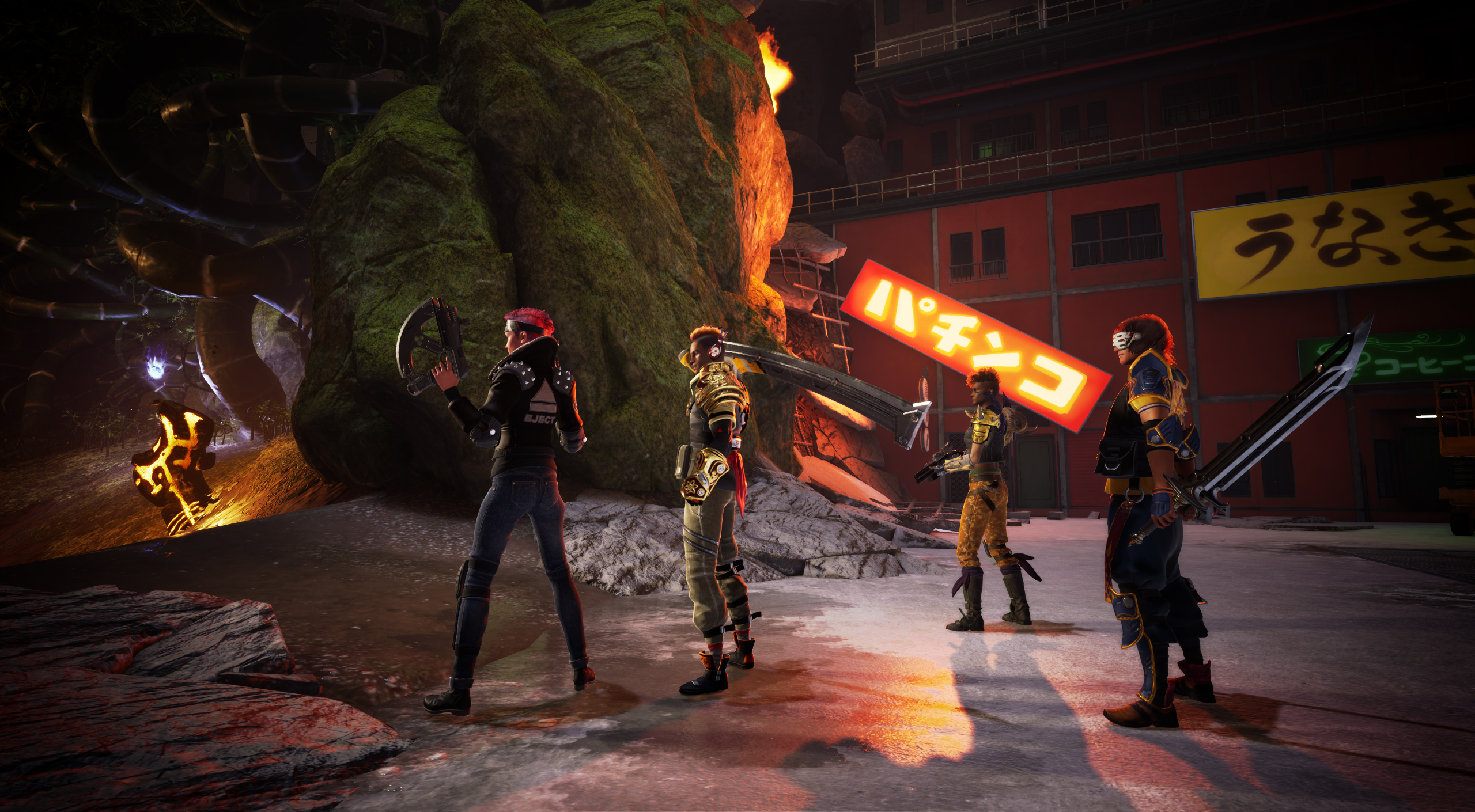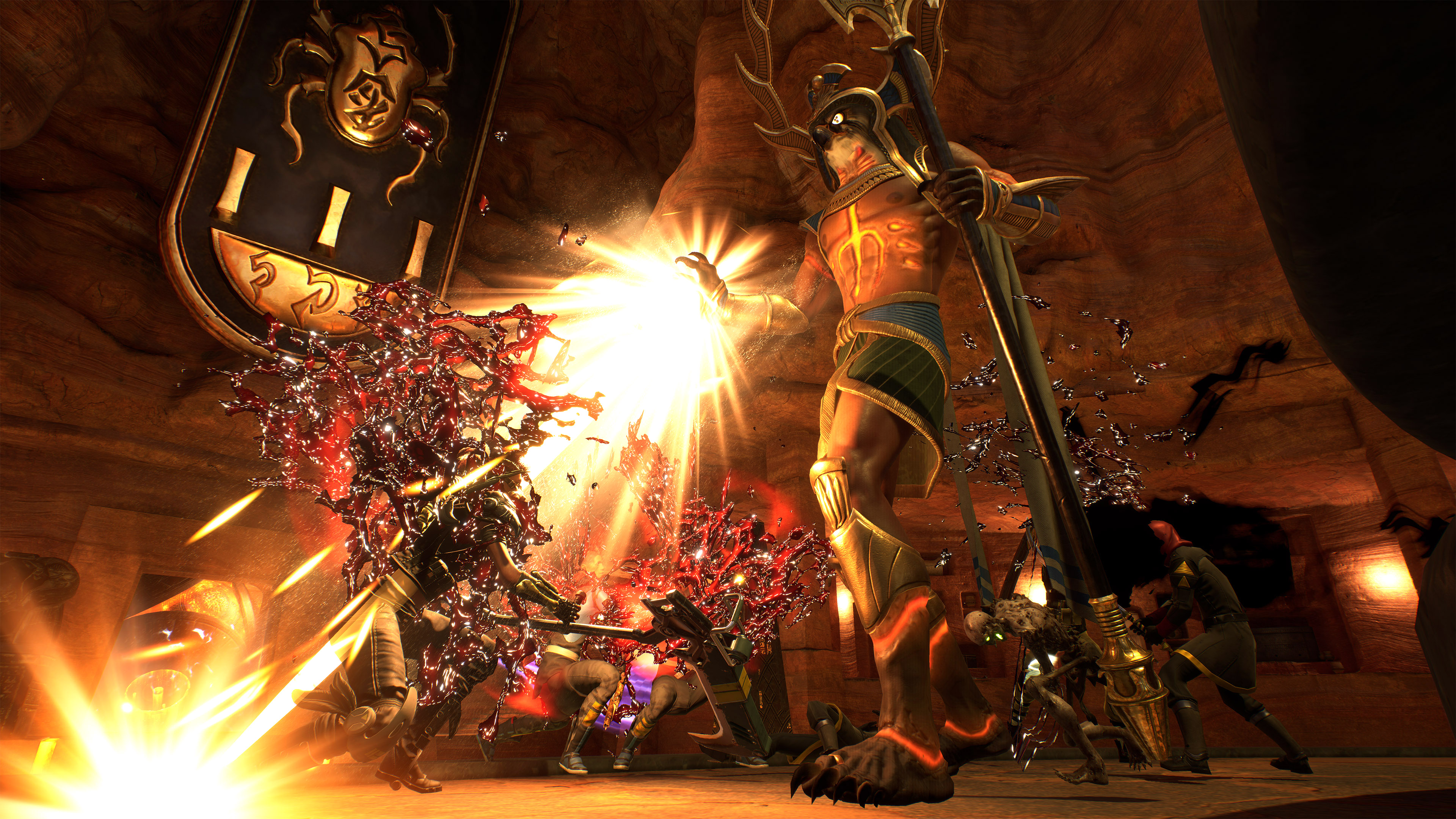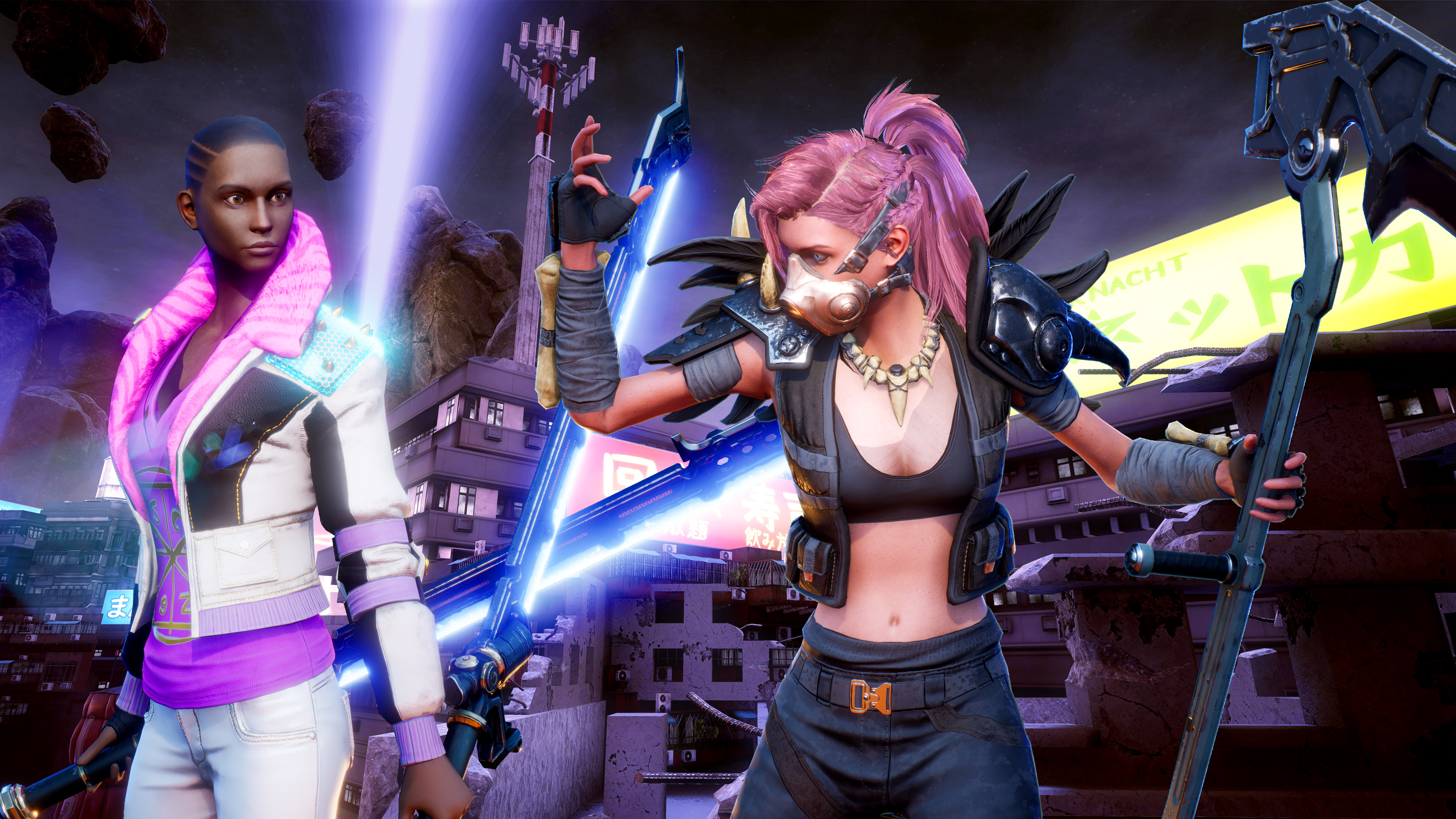Breach hands-on: co-op dungeon crawling that 'changes every time you play'
Creative character building takes the spotlight in this free-to-play asymmetrical action-RPG from ex-BioWare devs.
VIDEO: The first trailer for Breach, the debut game from Austin, TX-based studio QC Games.
Studio president Dallas Dickinson tells me that he imagines Breach to be whatever a player wants it to be. Sure, it's basically a third-person action-RPG with a spartan hotbar, a web of interlocking cooldowns, and an ultimate ability that charges over the course of a match. But after playing an hour of QC Games' debut project, Dickinson's vision becomes clearer. The sheer diversity of the mechanics and roles available to you in each class is audacious.
Perhaps you prefer the Elementalist, who calls down humongous meteors and earthquakes with interminably long casting times. Or the Gunslinger, who dumps clip after clip of molten lead into any unlucky fiend in their way. Or maybe you're looking for a swordsman that packs free-flowing aerial combat, Devil May Cry style, where you can keep an enemy propelled in the air through a constant juggle of physics-defying slashes. Or perhaps you want to try something truly off the wall, like the Lich, who hides a phylactery somewhere on the map and is essentially immortal until it's found and destroyed.

This is Breach's dream: to be a truly modular experience where players can min-max their builds and compositions until all those radical, divergent abilities and specialities cross-pollinate into a sublime dungeon run. It is also exactly the sort of design that the team, which previously worked on Star Wars: The Old Republic, left the triple-A industry to do.
"I can say with a straight face that this game is the game that me and the other founders had in mind from the get-go," says Dickinson. (It's also notable that BioWare had a game similar to Breach in development, but it was cancelled.)
At a glance, Breach is a four-player co-operative dungeon crawler with snappy sessions that last about 15 minutes. In a modern-day earth where the boundaries between the mythological and mundane planes of existence have broken down, you and your strike force are dispatched to eliminate the demonic incursion at its sources. In a map set in Tokyo, you'll square off with a bloodthirsty Oni, an Egyptian map hosts a bronzed Horus, and so on. The action itself is surprisingly unbound for an RPG. Characters are given a floaty jump and a liquid-fast dash to get out of trouble. The environments also take a Shadowrun curve—a world where heavy, futuristic industrial chic is powered by elves and ogres, like a dirtier, mustier Destiny.

The 18 classes Breach is launching with are highly customizable—you can swap out the abilities in your League of Legends-like loadout—but generally you'll be putting together a traditional squad including a tank, a support, and a DPS. Once you start a match, you'll enter a room and be given an objective: clear out enemies, escort a drone to a delivery point, or defend a specific area. Complete it, and each player on your team will be given a talent point to boost their effectiveness in combat. Your team then heads to the next room for a new, slightly tougher challenge, until eventually you find, and hopefully defeat, the boss. Classes can be purchased with money or in-game currency.
Keep up to date with the most important stories and the best deals, as picked by the PC Gamer team.
The catch is that all the enemies you'll be facing are under the influence of a player-controlled "Veil Demon"—basically a dungeon master, but edgy. The Veil Demon takes the form of an omnipresent black smoke monster who watches over the heroes like the Eye of Sauron. The Veil Demon player can set traps and create chokepoints for the party, and at any point can also possess any beastie in the room, giving them full control over its movement and attacks.
Annoyed that the boss keeps missing its shots? Jump in and do it yourself! There are six different classes of Veil Demon, each with a particular aptitude in mind. The one I played was able to detonate bombs and throw down ice patches to stymie and isolate specific members of the hero party. In another match, my team was absolutely annihilated by a Veil Demon who could summon turrets and create these chrono fields which slowed my character to a molasses crawl. It was an inspiring taste of just how evil you could get in Breach when you're good at being the bad guy.

"We want a dungeon crawl that changes every time you play," says Dickinson. "We do some of that purely through AI. You can play solo, and the composition of your party changes the levels every time. But the greatest AI in the world is human behavior. That's also because we're stupid, we create bad AI, and that's fascinating and also fun to play against. Like it's either, 'This guy is an idiot and we're gonna faceroll him,' or, 'Oh my God, this guy is from another dimension!'"
Breach will be a free-to-play game, but the developers promise me that they're making efforts to smooth out the progression system—meaning, you can take a three month break and return to find your account at roughly the same power level as anyone who's more active than you, without months of new releases and power creep leaving you in the dust. Progress is marked by simply unlocking more stuff: more classes, more socketable gems, more gear to help you hone in on a specific build. Like League of Legends and other games, that loot will only be purchasable with in-game currency, though there will also be cosmetics that will be equippable solely through post-release monetization.
For a development team that worked on a game like The Old Republic, where your hardcore friends can be sequestered away in super high-level zones, I understand why Dickinson wants to create a format where the carrot-on-the-stick pushing the player forward is, in his words, "collecting all the Pokemans," rather than slowly escalating one character and one class for eternity.

For a pre-alpha build, I found Breach impressively complete and refined. The combos and composition synergies—the stuff that makes these kind of pseudo-MOBAs exciting—pop off the screen with a deftness that reflects a lot of tender love and care. It's the sort of game you can get in the lab with, working out your rotation on the target dummies, and fine-tuning your selected abilities until you've captured lightning in a bottle. Dickinson is already looking forward to the tier lists that will inevitably pop up after release, but he also emphasizes the fact that Breach can be enjoyed about as casually as you like.
In fact, you can play the game alone with an AI Veil Demon and AI teammates if you're trying to get away from the meta. As a total newcomer who walked into the game and its systems sight unseen, I had plenty of fun and mostly knew what I was doing. That counts for something! Breach doesn't have a release date yet, but we'll be keeping tabs on development in the coming months.
Note: An earlier version of this story stated incorrectly that loot in Breach would be accessible with real money or in-game currency. QC Games notes that "loot will never been accessible with real money, only in-game currency." Classes, however, will be purchasable with both in-game currency and real money.

Luke Winkie is a freelance journalist and contributor to many publications, including PC Gamer, The New York Times, Gawker, Slate, and Mel Magazine. In between bouts of writing about Hearthstone, World of Warcraft and Twitch culture here on PC Gamer, Luke also publishes the newsletter On Posting. As a self-described "chronic poster," Luke has "spent hours deep-scrolling through surreptitious Likes tabs to uncover the root of intra-publication beef and broken down quote-tweet animosity like it’s Super Bowl tape." When he graduated from journalism school, he had no idea how bad it was going to get.

